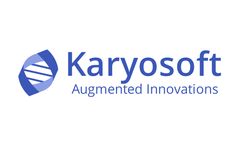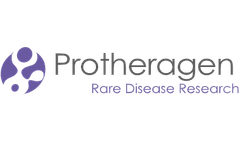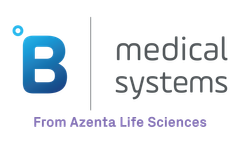Genome Sequencing Articles & Analysis: Older
69 articles found
Next-Generation Sequencing (NGS) has revolutionized genomics, providing unprecedented insights into the structure and function of genomes, transcriptomes, and epigenomes. ...
Critical breakthroughs, including pyrophosphate sequencing, reversible terminator chemical sequencing, and supported oligonucleotide ligation and sequencing, have catalyzed a monumental increase in throughput potential. ...
The submission portal (https://submit.ncbi.nlm.nih.gov/) is a programmatic interface for users to submit sequence data and download others’ sequence data. In addition to raw sequence data, you can also submit computationally assembled sequences, genomes, functional genomics data, ...
What is sequencing depth and coverage? Sequencing Depth Sequencing depth is the ratio of the total number of bases (bp) obtained by sequencing to the genome size, which is one of the indicators to evaluate the sequencing volume. ...
In response to the emerging needs in global healthcare, SOPHiA GENETICS has just revealed the New Generation SOPHiA DDM™ Platform, aiming to stay at the forefront of precision medicine and address today the healthcare needs of tomorrow. ...
Key techniques include multi-omics profiling, immune checkpoint blockers (ICBs), RNA-sequencing (RNA-Seq), single-cell analysis, imaging mass cytometry (IMC), and multiplexed ion beam imaging (MIBI). ...
Introduction to Variant Analysis Rare DNA changes within a population of cells are the first manifestations of mutations, which are the fuel for evolution. The research of genomic variation between species and individual organisms has been revolutionized by next-generation sequencing (NGS) technologies. Variant detection and analysis refer to the ...
A genomic library is a collection of DNA covering the entire genome of an organism. The genomic library contains all DNA sequences such as expressed genes, non-expressed genes, exons and introns, promoter and terminator regions, intervening DNA sequences etc. It is commonly used for genome ...
A genomic library is a collection of DNA covering the entire genome of an organism. The genomic library contains all DNA sequences such as expressed genes, non-expressed genes, exons and introns, promoter and terminator regions, intervening DNA sequences etc. It is commonly used for genome ...
Goal Understanding of Coronavirus (SARS-CoV-2) of interest using whole-genome sequence data from NCBI Solution Loci helps the scientists to understand the Coronavirus at the molecular level with a few click ...
(6) Plant Biology: Ribo-seq services are pivotal in studying how plants adapt to various growth conditions and environmental stressors, deepening our understanding of gene expression in plants. As the trusted partner in genomics research, CD Genomics is committed to providing high-quality Ribosome Profiling services marked by: Cutting-Edge Technology: ...
While the advent of next-generation sequencing provides a wealth of sequence information in a single run, it requires advanced algorithms to process and interpret this information. ...
Whole genome sequencing for rare diseases Whole genome sequencing, or the comprehensive analysis of an individual's complete set of genes, has emerged as a game-changer in diagnosing rare diseases. ...
Map to pan, which starts with de novo assembly, and matches the sequences of each individual assembled to the reference genome to find the unmatched sequences, then finds all the unmatched sequences and builds the pan-genome, or iterative mapping and assembly methods Iterative assembly starts with a single ...
Among the powerful genetic analysis methods, Whole Exome Sequencing (WES) stands out as a cutting-edge technique that employs sequence capture technology to enrich DNA from the whole exome regions, enabling high-throughput sequencing. WES offers a simpler, more cost-effective, and efficient alternative to whole genome ...
Thus, validating "candidate" drug resistance genes becomes crucial. Role of Whole Plasmid Sequencing in Identifying and Annotating Drug Resistance Genes Whole Plasmid Sequencing technology enables the screening and annotation of "candidate" drug resistance genes. ...
The following steps are included in the genetic engineering process: Target Gene Identification: The first step is to locate the genes that are responsible for the desired attribute using genome sequencing or metabolic pathway research on yeast. Gene Modification: CRISPR-Cas9 or homologous recombination are two genetic engineering methods used to change the ...
Overview of Whole Genome Sequencing The genome of each individual organism contains its entire genetic information. ...
Scientists around the world have been working on the genomics of the parasites as well as the vectors to find way to fight the disease. ...
The full genome sequence is 126-134 kbp, and the GC content in the base is about 50%. Its genome consists of a long unique region (UL) of 99 kbp and a short unique region (US) of 27 kbp. ...









